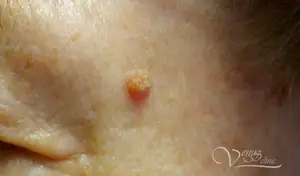
Hyperpigmentation - Causes and Treatment
The youthfulness and beauty of our skin depends on many factors, including genetic predisposition, lifestyle, stress levels and of course daily skin care.

What is hyperpigmentation?
Human skin color can vary from dark brown to pale and almost transparent, with complete or almost complete absence of melanin pigment (albinism), sometimes even with a reddish tint, due to the vessels close to the surface. First of all, the skin color of different ethnic groups depends on the amount, type and distribution of melanin in the skin.

- Melanin- the main skin pigment, which is produced by special cells of melanocytes, in the basal layer of the epidermis.
- Melanocytes are epidermal cells in which, under the influence of hormones and ultraviolet radiation, melanin is produced in the skin. The main a melanocyte function is to protect body cells from the damaging effects of ultraviolet radiation. In the form of microgranules, melanin is secreted by melanocytes and accumulates in the cells of the epidermis, giving our skin tone. The very process of formation and distribution of melanin is called melanogenesis.
The level of melanin in the skin is determined at the genetic level (see Skin phototypes), however its amount can also be influenced by excessive exposure to ultraviolet radiation, hormones and age.
An increase in the activity of melanocytes leads to an increase in melanogenesis in certain areas, which externally manifests itself in the form of age spots.
Hyperpigmentation is a term describing various conditions of the skin that cause the formation of age spots, as a result of a violation of the production and distribution of melanin in the skin.
Although hyperpigmentation does not pose a health hazard, it has features of an aesthetic nature, and can also indicate more serious disorders of the internal organs.

Causes
The causes for the formation of pigmentation can be both external and internal, and depending on this, pigment spots can have a certain shape, color and localization.
Among the main causes are:
- Negative UV exposure due to excessive sun exposure without protection, which leads to increased production of melanin and its uneven distribution.
- Hormonal imbalance, especially in women, as they are more prone to hormonal surges, especially during pregnancy, lactation and menopause, compared to men.
- Mechanical damage, as with post-traumatic hyperpigmentation, is common with acne.
- Genetic predisposition that can be easily traced just by looking at your older generation.
The most common manifestations of genetic predisposition are freckles, solar lentigo and birthmarks. - Medical remedy that can also cause pigmentation or hypersensitivity to ultraviolet light.
Types of pigmentation
Depending on the depth of occurrence of the pigment and hyperpigmentation can be:
- epidermal, this type of hyperpigmentation responds best to topical treatment; pigmented areas have clear dark brown edges;
- dermal, it is more difficult to correct due to the distribution of pigment in the deeper structures of the skin; visually looks like spots of irregular shape of light brown color with indistinct borders;
- mixed, when the pigment is located in both layers of the skin: epidermis and dermis; externally, age spots appear as superficial hyperpigmentation.

Pigment spots can be localized on almost all parts of the body, including the face, neck, décolleté, hands, precisely those areas that are most exposed to ultraviolet radiation and are subject to photo damage.
Methods for treating age spots
Treatment of hyperpigmentation is important and is one of the most common reasons for seeking the help of dermatologists around the world.
Definitions of the type of hyperpigmentation and the causes of its occurrence are very important and are decisive in the selection of a treatment regimen, which may include: chemical peels, laser and phototherapy, injection techniques, local remedies with retinoids and hydroquinone, products based on oligopeptides, as well as an obligatory item - protection of the skin from ultraviolet radiation of a wide spectrum of action, as a means of daily care.
The main directions in the treatment of skin hyperpigmentation:
- inhibition of tyrosinase synthesis
- suppression of melanogenesis
- acceleration of cellular renewal and proliferation of healthy cells (to smooth the skin surface by gradually exfoliating damaged cells and moving healthy cells to the surface)
- exclusion of the negative effects of ultraviolet radiation, as a factor provoking the development of hyperpigmentation
For effective treatment of age spots, we use an integrated approach, which includes:
- chemical peels (Jessner, mixed TCA peels, retinoic peels);
- fractional laser rejuvenation;
- injection techniques (mesotherapy and biorevitalization);
- photorejuvenation BBL, Sciton.
For more information on treatments: Pigmentation Treatment.

Prophylaxy
It is important that none of the treatment protocols for hyperpigmentation is complete without comprehensive broad-spectrum UV protection with an SPF factor of 30 to 50 in daily care. This is the step where your care for the health and beauty of your skin begins!
It is possible to get rid of age spots by choosing an integrated approach and entrusting the health of your skin to professionals!
See you at the Venus Clinic, a place where the beauty and health of your skin comes first!






